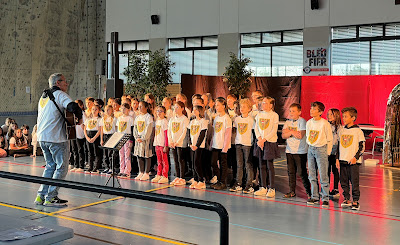"But you, Ensisheim in Alsace, though you are small among the cities of the Holy Roman Empire of the German Nation, you will become the administrative capital of Further Austria (Vorderösterreich). Your origins are from of old, from ancient times."

|
| Ensisheim around 1650 |
Ensisheim was first mentioned in a document in 768 under the name Engisehaim.
In Merian's Topographia Germania, Alsace 1663, it is written that after the
death of the Landgraves of Ensisheim around the beginning of the 13th century,
the town and castle, together with the landscape of Upper Alsace, came under
the hegemony of the Counts of Habsburg.

|
| The Habsburg or Habichtsburg (hawk castle) in Aargau |
*present-day Switzerland

|
| Rudolf's monument on the square in front of the church at night |
In 1510, the city became the seat of the administration of Further Austria (Vorlande), i.e., Alsace, Breisgau, Aargau, and Lake Constance.
On November 15 and 16, 2024, Ensisheim hosted a colloquium on the question, "Why did Ensisheim become a central place for the Habsburgs in the region?" In a future blog, Red Baron will attempt to answer this query.

|
|
The museum piece. Note the meteorite's impact on a field outside Ensisheim in the background. Click to enlarge. |
One event has burned itself into people's memories. In Merians Topographia,
we read, "1492 on November 7, a stone or dumpling weighing 280 pounds, a foot high,
and the same color as iron ore fell from the clouds with a thunderclap."
Sebastian Brant wrote a poem:
Since one counts fifteen hundred years on St. Florence's day, it was
ninety and two at noon there was an enormous thunderclap a stone of three
hundredweight fell in a field before Ensisheim.
King Maximilian ordered the "symbol of God" to be taken to the church and
kept there. When he visited the site 14 days later, he did not know that he
had inspected the first historically documented meteorite in Europe while it
was still almost warm. Today, the meteorite is kept in the city museum
in the historic Palais de la Régence.

|
|
Maximilian's press spokeswoman announces the King's visit. He is surrounded by his bodyguards. |

|
| They are entertaining the King performing ... |

|
| ... and singing |
*


No comments:
Post a Comment